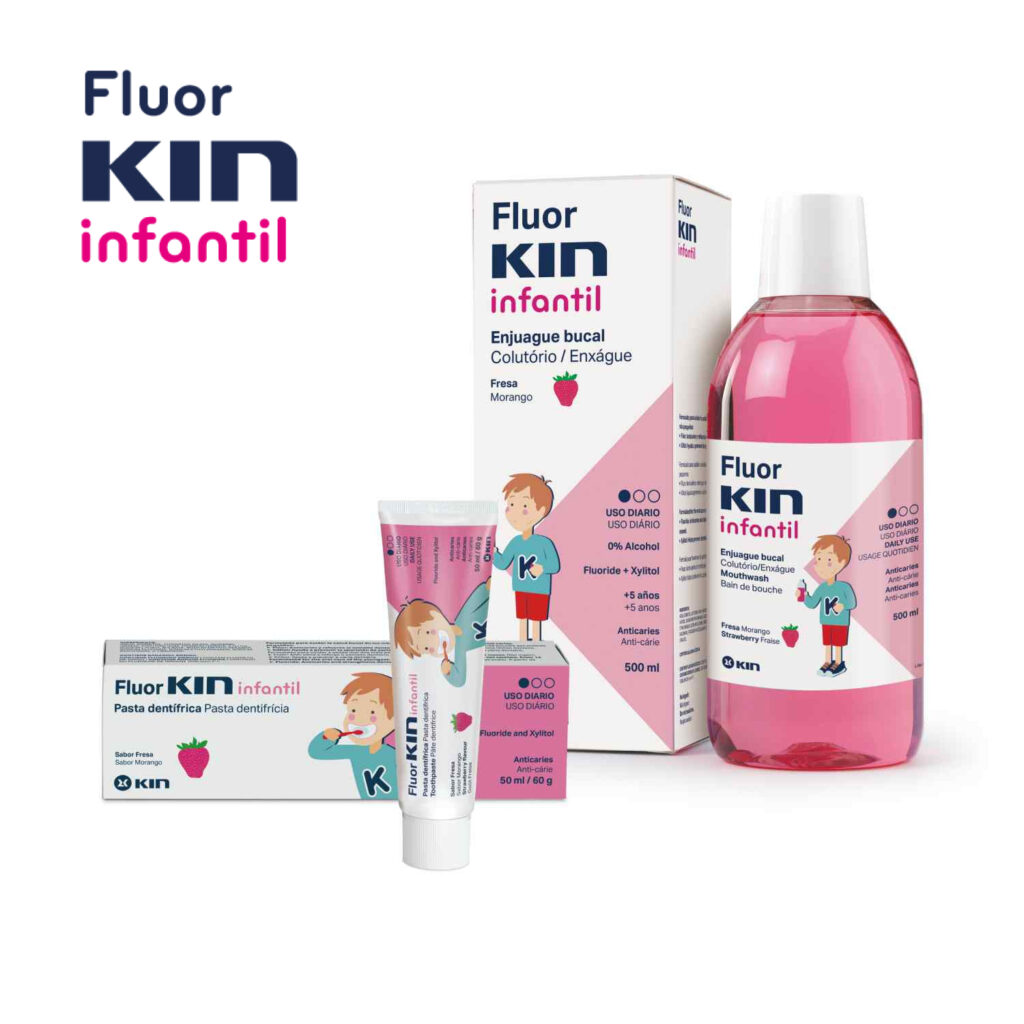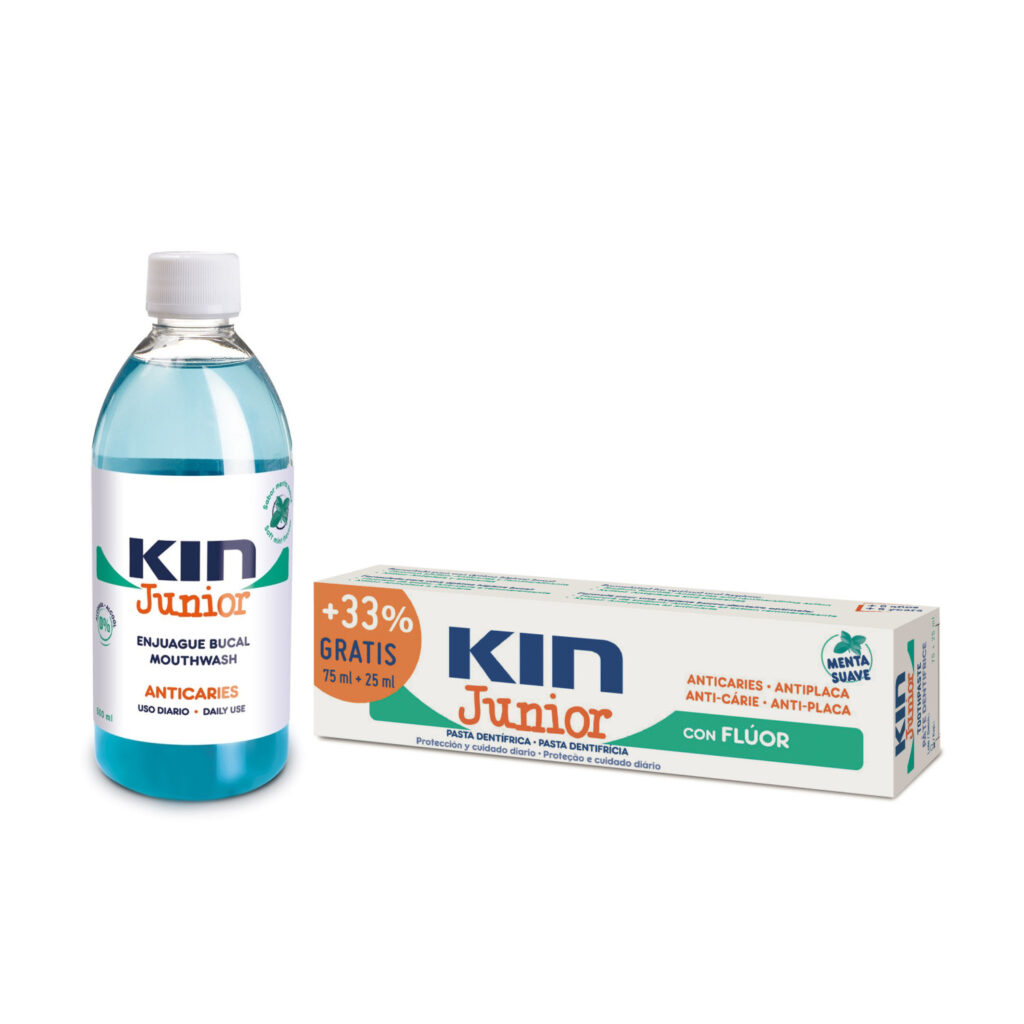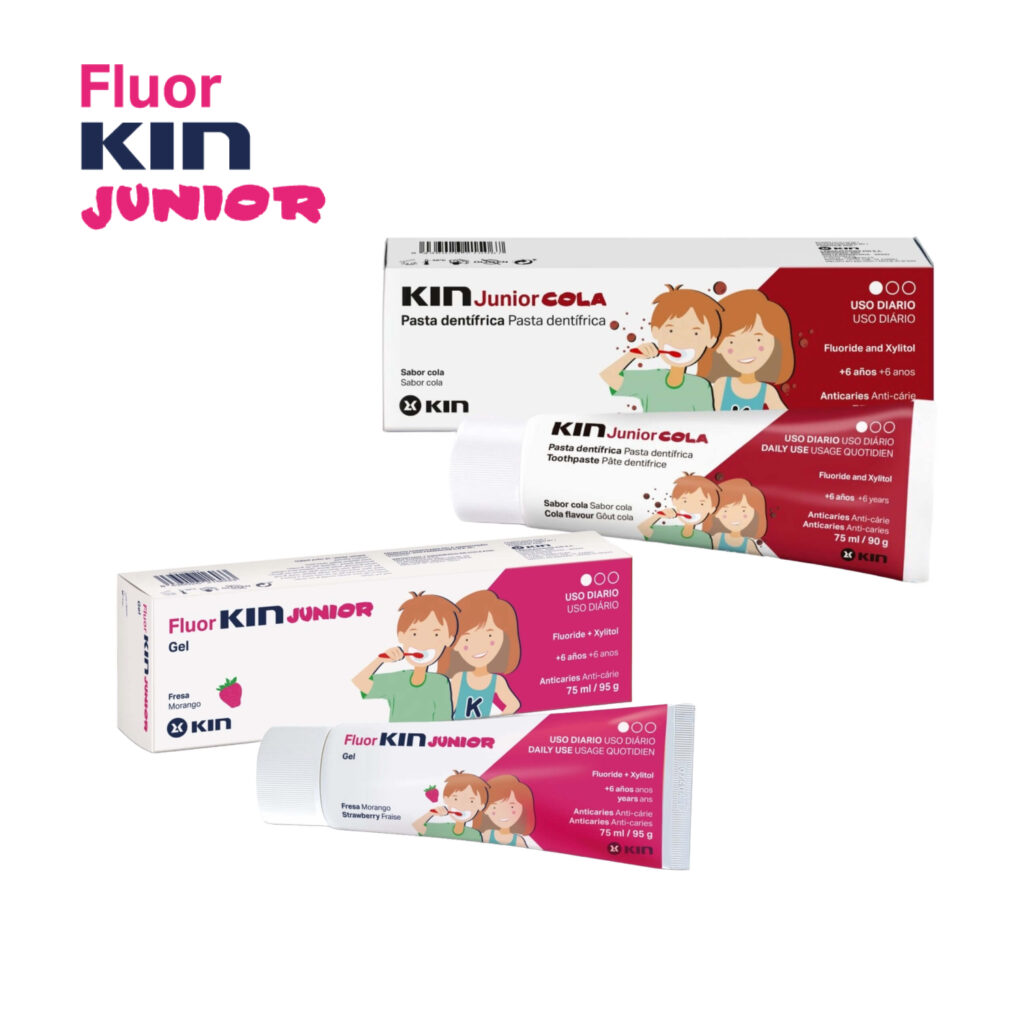Oral health care begins in childhood. The teeth and gums of young children in the house, just like those of adults, are at risk for multiple diseases with negative effects on their health. One of the most frequent are cavities in children, mainly caused by lack of hygiene and consumption of certain foods in this population group.
From Laboratorios KIN We want to promote the children's dental hygiene and the prevention of tooth decay in children. For this reason, we put forward answers to the main questions about it.
Caries is the most common chronic childhood disease and can develop from the appearance of the first baby teeth. It is here, where a correct oral hygiene comes into play, necessary for the correct development of the definitive teeth, maintaining the integrity of each of the dental pieces.
What is tooth decay and what causes it?
Caries is a multifactorial disease characterized by the destruction of the hard tissues of the tooth as a result of demineralization caused by the acids generated by dental plaque.
Bacteria naturally found in the mouth feed on food debris accumulated on the surface of the teeth, releasing acids that over time destroy the layers of dental tissues.
When not treated at the right time, small cavities can begin to form, which over time can become deeper, reaching deeper layers of the tooth. This slow process is completely painless until it reaches the nerve.
No matter how hard the tooth enamel is, the action of the bacteria that form the bacterial plaque, and the waste they release, damage the enamel irreversibly. This can occur in both permanent teeth and children's baby teeth.
According to a National Survey of Oral Health in Children, the prevalence of cavities in the primary teeth is 36%.
When does tooth decay appear in children and why?
Known as baby bottle tooth decay, the action of bacterial plaque can begin with the first baby teeth coming out. It is a disease associated with frequent sugar intake and is mostly related to the bad habit of sleeping with a bottle in the mouth. This type of damage to tooth enamel can occur in children between the ages of 6 months and 5 years.
In older children, as mentioned above, tooth decay is caused by a combination of several factors:
- The presence of acid-producing bacteria in the mouth
- The susceptibility of tooth enamel.
- Consumption of carbohydrate-rich foods such as sweets, sugary drinks and others.
- The quality of oral hygiene.
All this can lead to a state that is ideal for the spread of bacteria that produce the acids that break down the tooth's enamel.
How can I recognize tooth decay?
The formation and activity of bacterial plaque on the teeth are not easy to detect with the naked eye. It is usually the dentist who diagnoses caries in children through regular check-ups.
If it is the parents who discover it, it is usually too late because this means that the cavity is in a very advanced state.
The first sign is the appearance of a color change in the tooth that becomes whitish and dull. In a more advanced phase, a yellow, brown or black border is observed at the level of the area that has been treated, and in the most visible phase, the loss of substance and breakage of the tooth enamel appears.
When childhood caries occurs with a dark color in the tooth, the appearance of bad breath and even pain in the tooth, it may be a sign that it has reached the nerve or is about to reach the tooth's pulp.
So how do I recognize a child's tooth decay?
The first sign is the appearance of a color change in the tooth that becomes whitish and dull. At a more advanced stage, a yellow, brown or black border is observed at the level of the decayed area. In the most visible phase, loss of substance and breakdown of the tooth enamel appears.
The progression of cavities is usually very slow, which is why it is so important to make a regular visit to the dentist in order to detect any damage in its early stages. Although children's baby teeth are temporary, their condition affects the health of the permanent teeth that will come in as the temporary teeth are moved.
What habits cause it?
Many factors influence the formation of caries in baby teeth. However, the main, and most common factor in most cavities in children is poor oral hygiene.
Not cleaning your teeth and gums after every meal, or doing so incorrectly, provides the ideal environment for bacteria in your mouth to grow and form bacterial plaque. The remains of food and drink serve as food for growth.
Baby teeth have less protection than adult teeth because their pulp cavities (where the nerve lives) are wider, so they are at greater risk of being severely affected.
In addition to this, consumption of sugar-rich foods is another determining factor in childhood caries. Simple sugars are consumed by bacteria, favouring the release of acids that damage the enamel.
How are cavities treated in children?
Depending on whether it affects the permanent or temporary dentition, and depending on the age of the child, childhood caries will be treated differently.
Based on the type of treatment we can find the following situations:
- If the lesion reaches the nerve and we are dealing with temporary teeth, a pulpotomy is performed.
- If the cavity does not affect the nerve tissue of the tooth, it is filled with a paste (the filling).
- If the cavity causes a large hole, metal crowns are applied to maintain the space while facilitating correct mastication.
- In more advanced cases where the infection has resulted in the destruction of the tooth root, extraction of the tooth may be required.
On the other hand, a space maintainer should be installed to avoid losing the space needed for the correct location of the final tooth.
Cavities in children from 2 to 5 years old
For the treatment of caries, the dentist will take into account the degree of injury to the tooth. Tooth decay in baby teeth can progress rapidly, so it is crucial to see a professional at any sign of decay in your infant.
The treatment of childhood caries in baby teeth can involve anything from a filling to a pulpectomy to remove the damaged pulp while preserving the functionality of the tooth.
Early treatment of cavities in primary teeth avoids affecting the permanent teeth that take their place. Take care of your little ones' smiles with our line of children's products.
Discover our children's oral care products

Cavities in children from 6 to 12 years old
The treatment of cavities in children who have already moved their baby teeth is similar to that of adults.
In the mildest cases, if the caries is detected early, it is possible to make a filling, sealing the damaged area with a sealing material.
In more advanced cases where the infection has caused nerve damage to the tooth, a root canal may be required or, depending on the level of destruction of the crown, a possible extraction of the tooth.
What preventive measures are advisable?
The most important preventive measure is daily hygiene from the appearance of the first teeth. According to the WHO, good dental hygiene reduces the incidence of caries by up to 50%.
For this reason, Laboratorios KIN recommends the use of children's brushes and toothpastes, regular visits to the paediatric dentist and good eating habits as the key to preventing tooth decay in children.

Educating children in good oral hygiene is the key for the little ones in the house to learn how to take care of their teeth. Brushing teeth after every meal, prolonging brushing for at least 2 minutes, making good use of age-specific products, prevents many dental problems in children, including childhood caries.
For this reason, Laboratorios KIN recommends the use of toothbrushes and toothpastes adapted to each age, regular visits to the paediatric dentist, as well as good eating habits as keys to prevent the appearance of cavities in children.
Do you have more questions about tooth decay in children? From Laboratorios KIN we encourage you to present your case or send us any questions through the comments.
Follow us: Facebook, Twitter, Linkedin or Instagram
You may be interested in: Why is fluoride so important for teeth?


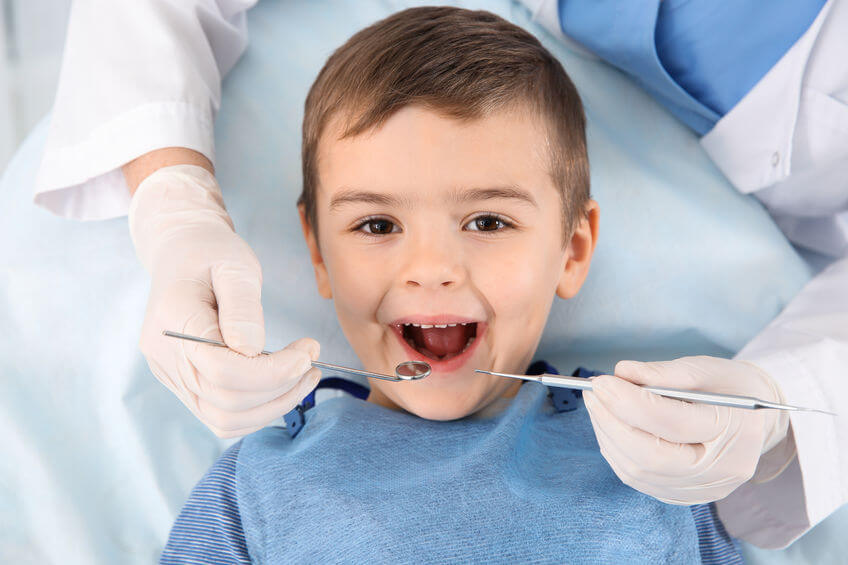
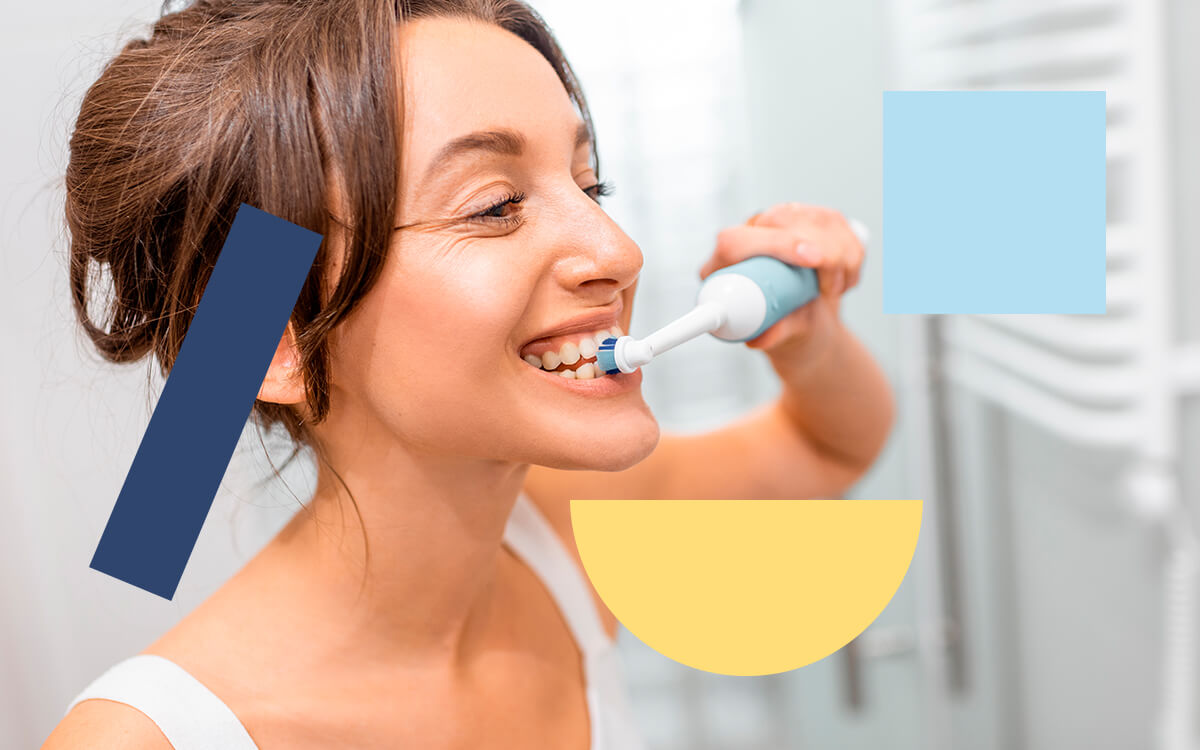 What to consider when choosing the best electric toothbrush?
What to consider when choosing the best electric toothbrush? How to relieve pain with newly placed braces?
How to relieve pain with newly placed braces? How to keep your breath fresh?
How to keep your breath fresh?